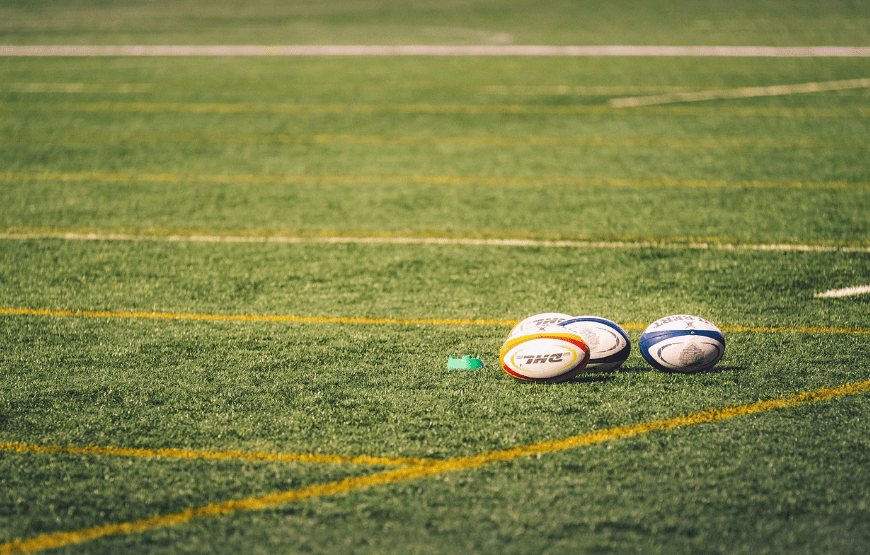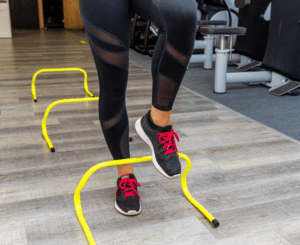Whether you’re a professional or recreational rugby player, rugby is a physically demanding sport that requires agility, strength and endurance. Due to the nature of the demanding sport, the risk of injury is high. To help minimise the risk of these injuries, it is important to identify the common injuries in rugby and how to reduce the risk of obtaining them. Physiotherapy has a crucial role in the prevention and rehabilitation of rugby injuries, aiming to keep you in the game and maintain your optimal performance. This blog will share with you the common rugby injuries.
1. CONCUSSION
A concussion is a brain injury that can result from taking a hard hit to the head, a hard collision or from a sudden acceleration or deceleration of the head. For example, in a scrum or a tackle. Physiotherapy can play a crucial role in the diagnosis and management of concussions in rugby. To diagnose a concussion and to determine the severity of the concussion, the physiotherapist will perform a Sport Concussion Assessment Tool test (SKAT). The SCAT is a standardised tool used to evaluate athletes suspected of having a concussion and requires specialist intervention.
2. ANKLE SPRAIN
The dynamic nature of rugby increases the risk of ankle sprains, especially during quick changes in direction or uneven terrain. An ankle sprain occurs when the ankle ligaments are over-stretched or torn. The most common ankle sprain is an Anterior Tibiofibular ligament sprain which results from an inversion (ankle rolling inwards) movement.
3. SHOULDER DISLOCATIONS AND ROTATOR CUFF INJURIES
The repetitive tackling and contact in rugby can lead to shoulder dislocations and rotator cuff injuries. Strength training for shoulder stability, proper technique in contact situations and targeted exercises. Physiotherapy focuses on strengthening the shoulder muscles, range of motion exercises, and gradual return to play.
4. ACL KNEE INJURIES
Anterior cruciate ligament (ACL) tears and meniscus injuries are common in rugby due to the frequent changes in direction and high-impact collisions. The twisting, dynamic movements, uneven ground, sudden stops, and direct impact to the knee can increase the risk of ligament injuries. Adopting an effective strength and conditioning program including neuromuscular training, strength and agility conditioning, and technique refinement helps to prepare the body to be game-ready. One of our physiotherapists can carry out a full assessment to identify your specific areas for improvement and the will work with you to develop a strength and conditioning program. Surgical intervention for severe cases, followed by physiotherapy, strength training, and gradual return to play. Our physiotherapists follow evidence-based criteria to ensure you return to play as quickly and as safely as possible as well as ensuring to lower the risk of injury reoccurence.
5. HAMSTRING INJURIES
Rugby players are prone to hamstring injuries, given the sprinting and sudden accelerations involved in the game. Dynamic warm-ups, regular flexibility exercises, and strength training for the hamstrings and be useful to prevent injuries. For acute phases of hamstring injuries the R.I.C.E. (Rest, Ice, Compression, Elevation) is advised. Physiotherapy interventions for hamstring injuries often include stretching, eccentric strengthening exercises, and progressive agility drills. Proper biomechanical analysis may also be conducted to identify and address contributing factors.
6. FRACTURES
High-impact collisions and tackles can lead to fractures, particularly in bones such as the collarbone,
ribs, and facial bones. Due to the nature of the sport, in some cases fractures can’t be prevented and there is always a risk. However, wearing protective gear, using proper game technique, and adherence to game rules will all help to lower the risk. Additionally, it is also important that you are fuelling your body and ensuring you are obtaining all the necessary nutritional requirements to meet the demands of the high-energy game. The initial phase of fracture rehabilitation is to rest and recover, letting the bone heal. Our team will work collaboratively with medical clinicians and will gradually begin rehabilitation focusing on mobility, strength, and function before progressing onto a return to play program.
Conclusion:
While rugby injuries are an unfortunate reality, physiotherapy serves as a crucial ally in the journey to recovery and injury prevention. Players, coaches, and healthcare professionals must work together to implement comprehensive strategies that prioritise player safety and long-term well- being. Through a combination of targeted exercises, rehabilitation protocols, and education on injury prevention, our team at Tops: health are happy to help keep you rugby enthusiasts to keep playing the game you love injury free.



